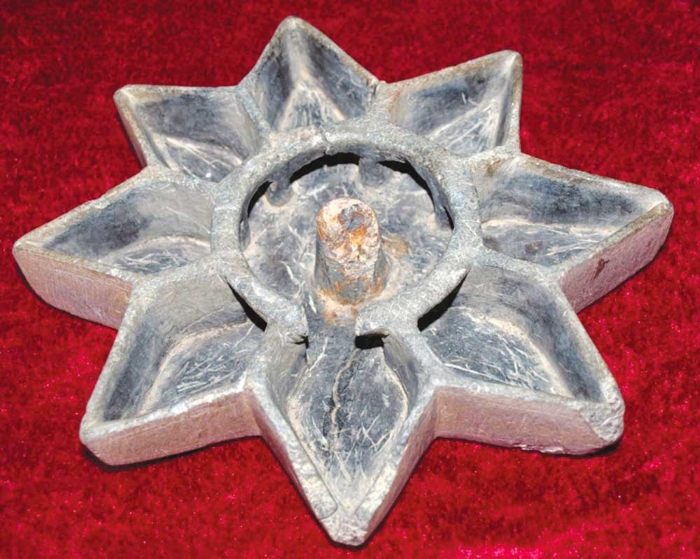Yazgul Tirkishova, Deputy Director of the Mary Velayat Museum for Branches and Public Museums
The history of material culture is deeply intertwined with stone—a material that, due to its durability and malleability, has played a crucial role in the creation of tools, household items, and decorative objects for centuries. This connection is particularly evident in an exceptional exhibit housed in the branch of the Mary Velayat Museum in the village of Mekan, Bayramali district: a medieval octagonal stone lamp. This artifact not only demonstrates remarkable craftsmanship but also provides insight into the cultural and economic life of the region.
During the Middle Ages, Merv was one of the largest centers of trade, science, and craftsmanship along the Great Silk Road. The city’s thriving artisanal production, particularly in stone-cutting, is confirmed by numerous archaeological findings, among which this unique lamp holds special significance. The importance of Merv as a hub of civilization cannot be overstated—it was a melting pot where cultures converged, fostering an exchange of ideas and technologies that enriched local craftsmanship. The stone lamp, in this context, is more than a utilitarian object; it stands as a testament to Merv’s high level of cultural and artistic development.
The lamp, known as the “Light of Merv,” is made of dark stone, likely steatite—commonly referred to as soapstone—which is soft and easy to carve. Designed in the shape of an octagonal flower with carved edges, it showcases the refined skill of Merv’s stonemasons. At its center remains a low round column with a fixed metal pin, suggesting that the lamp may have once been used as part of a chandelier.
The octagonal shape holds deep symbolic significance in Islamic art, representing the transition between the square (earthly realm) and the circle (heavenly realm). This form was frequently used in architecture, mosaics, and decorative elements, reflecting a philosophical pursuit of harmony and balance between the material and the spiritual.
The surface of the lamp is adorned with etched depictions of fish or lush floral motifs, both of which carry profound symbolic meaning in Oriental art. Fish are often associated with fertility, abundance, and wisdom, while flower buds symbolize beauty, renewal, and prosperity. In Islamic artistic tradition, these motifs may also allude to the paradisiacal gardens described in religious texts, further emphasizing the lamp’s spiritual significance.
Perhaps such lamps were used in religious or palace settings, where they provided not only illumination but also a sacred ambiance. The craftsmanship of the lamp aligns with other stone artifacts from Merv, including dishes, amulets, and seals, underscoring the versatility and skill of local artisans.
Medieval scholars such as Ibn Hawqal and Al-Maqdisi documented the quarrying of stone in the Nukan mountains of Iran and its subsequent transport to cities across Khorasan. These historical sources confirm the region’s extensive trade networks and highlight the economic importance of stone craftsmanship in Merv, as well as the sophisticated logistics behind the movement of raw materials and finished goods.
The medieval octagonal stone lamp from Merv is more than an artifact—it is a window into the past, revealing the advanced stone-cutting techniques and artistic sensibilities of its time. Its discovery enriches our understanding of cultural and economic exchanges along the Great Silk Road, illustrating the high esteem in which Merv’s artisanal traditions were held. Through this lamp, we gain a deeper appreciation of medieval Central Asia’s daily life, aesthetic values, and technological achievements, reinforcing the vital role that archaeological finds play in uncovering the rich history of the region. ///Neutral Turkmenistan Newspaper, 3 April 2025
